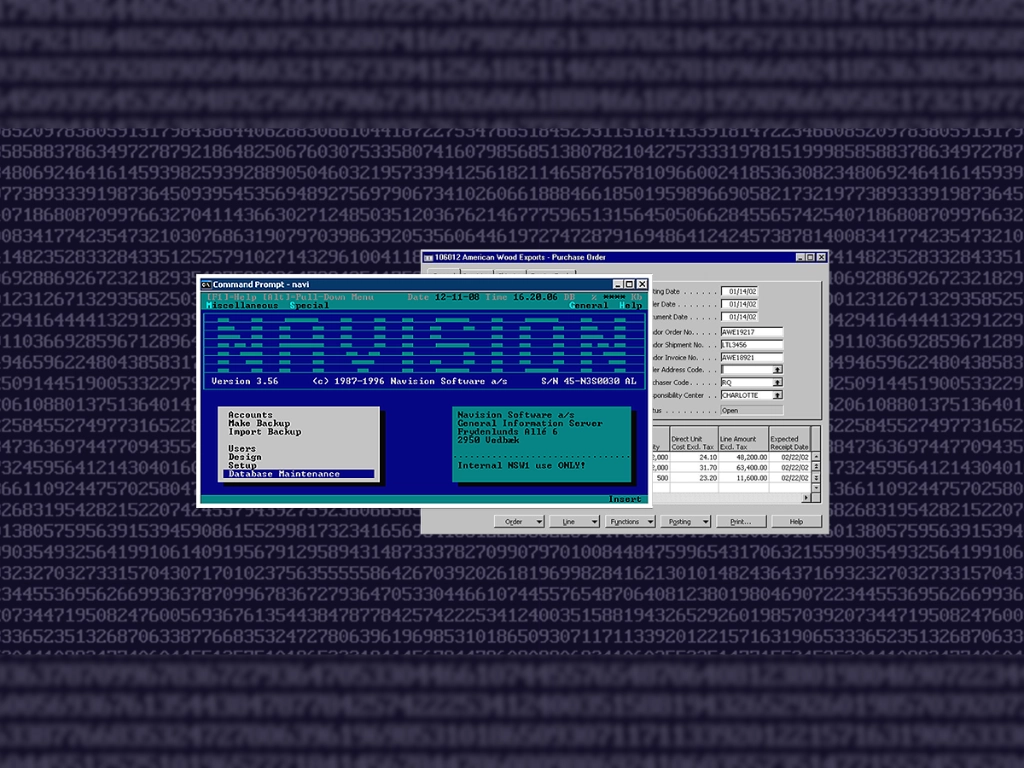How Navision Got Transformed into Dynamics 365 Business Central/ NAV
If you come across Business Central, NAV and Navision, you might be confused if they all refer to the same product. Do we use these three Microsoft solutions interchangeably or are they completely different?
It’s best if we follow the history of how Navision got transformed into Business Central over the years and differentiate between the three product names.
In the 1980s in Denmark the company PC&C A/S introduced a single-user accounting application – PC Plus. Later, PC&C developed Navision – an accounting application with client/server technology which meant it could be accessed by multiple users: a remarkable achievement for that time. In 1995 the Danish company launched the first version Navision that could be used on Windows 95. The popularity of Navision was spreading rapidly across Europe due to its suitability for small and mid-sized businesses. To mark the significance of such a solution, the company PC&C got renamed to Navision Software.
The accounting solution's success became evident when Microsoft recognized and acquired Navision in 2002, after also acquiring Great Plains Software. Microsoft made Navision part of their business application suite, back then known as Microsoft Business Solutions.
In 2005 Microsoft decided to rebrand the name of the product, thus Navision took the official name of Microsoft Dynamics NAV. The entire product line was also renamed, and the word “Dynamics” was added to each product as part of Microsoft’s family of ERP solutions - Dynamics AX, Dynamics NAV, Dynamics GP, Dynamics SL, Dynamics CRM.

Microsoft Dynamics NAV Logo
The next big shift came in 2016 when Microsoft introduced their new cloud-based suite of business applications – Dynamics 365 that combined ERP and CRM capabilities. As a result, Dynamics Navision underwent another rebranding in 2018 and became Dynamics 365 Business Central. The Business Application suite includes Dynamics 365 Finance and Operations, formerly Dynamics AX; Dynamics 365 Business Central, formerly Dynamics NAV; and Dynamics 365 Sales, Marketing, and Customer Service, formerly Dynamics CRM.
Dynamics 365 Business Central is a successor of Dynamics NAV, which often confuses users. Many think that Dynamics 365 Business Central is a completely different solution from Dynamics NAV, but it is rather an improved and upgraded version introduced in 2018 and still undergoing major developments every year. Follow the history of Microsoft’s #1 ERP system – from Navision to NAV, and to the final product - Business Central in this simple graph or our “History of Navision” page:

History of Navision
Think of Navision, NAV and Business Central as a process of metamorphosis. Navision laid the foundation of Dynamics 365 Business Central or put in other words: it bloomed and transformed into the ERP system choice of thousands of companies around the world. The legacy system Navision hasn’t been available for a long time now, but some companies are still using Dynamics NAV, even though the regular support for the NAV versions has already ended and the extended support is coming towards its end (scheduled to end in 2028). After that the system will no longer receive updates for enhancement and data security.
How does Dynamics 365 Business Central differ from Dynamics NAV?
-
Dynamics 365 Business Central includes a wide variety of functionalities that get updated frequently, while Dynamics NAV cannot provide innovative approaches in business management. NAV lacks support and its features are too limited, thus a lot more customizations are needed if you want to achieve maximum results.
-
Business Central is paid on a subscription basis depending on the number of users. With Dynamics NAV you need to pay for the server, no matter how many users are accessing the system.
-
Business Central introduced a new AL language for development which allows for more customization, integration of add-ons and apps for further boosting your productivity.
-
Business Central reveals the benefits of the cloud: accessibility, security, minimal chances of data loss. The cloud eliminates the need for costly maintenance of on-premises servers.
-
The web-based UI of Business Central gives users a more modern and simplified view of their data. With the dashboards and graphs provided by Business Central, users can follow all key insights effortlessly.

Microsoft Dynamics 365 Business Central Logo
Moving from NAV to Business Central is almost inevitable with the shift towards modernization and digitalization across all industries. Old systems are always a setback – why put your business development on hold when you can embrace the latest version of Dynamics 365 Business Central and explore the newest features that Microsoft introduces?
Yes, Dynamics NAV still works but this version of the system is extremely limiting to your work efficiency, productivity and successful results. If you are still relying on these outdated solutions, it is time to consider your migration to Dynamics 365 Business Central.
Contact us if you want to explore the benefits of modern ERP solutions.







